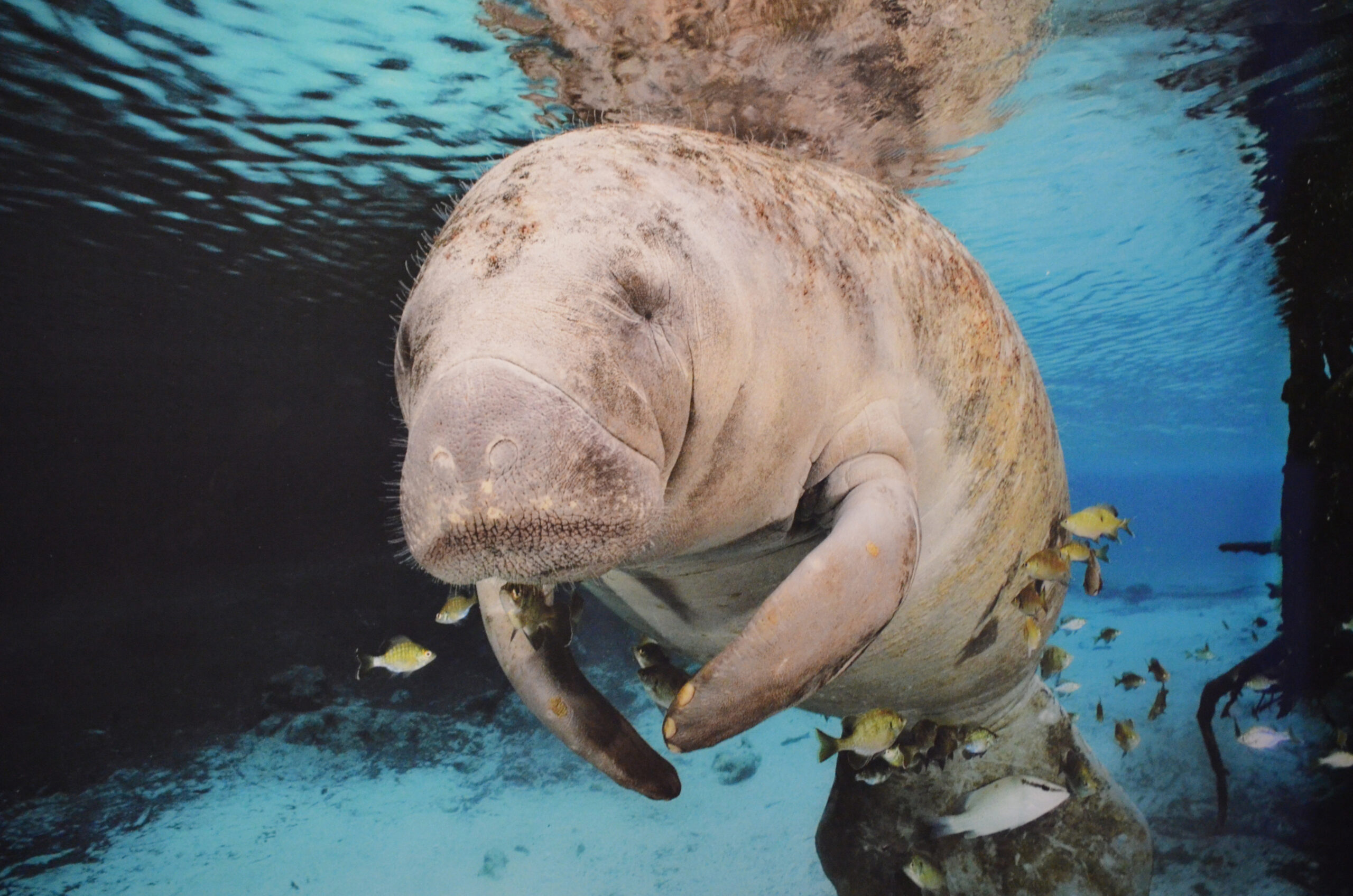You cannot miss the fascinating world of manatees if you are fascinated by the wonders of aquatic life. These magnificent creatures, sometimes known as sea cows or gentle giants of the sea, have won the hearts of many conservationists and nature lovers alike. We’ll explore 12 fascinating fun facts about manatees in this post, illuminating their distinctive traits, behavior, and ecological significance.
Habitat and Distribution
Manatees are mainly found in shallow, still waters around the beaches, rivers, and estuaries of the Caribbean, sections of South America, and the southeastern United States. They are frequently seen in the waters of Florida, Belize, Brazil, and other tropical areas since they love warm waters. These serene creatures tend to seek out areas with abundant seagrass beds, as these serve as important feeding grounds for them.
Physical Characteristics
A typical adult manatee can weigh up to 1,500 pounds (680 kg) and grow as long as 13 feet (4 meters). These aquatic herbivorous mammals have flippers that resemble paddles and a special body shape that fits their aquatic habitat excellently. Their rounded, wrinkled snouts, which they use to investigate and seek for food, are one of their most distinctive characteristics. They can graze on seagrass with amazing dexterity thanks to their huge, bristling lips.
Diet and Feeding Habits
Manatees are herbivores, which means that only plants make up their diet. They are know to eat an astonishing quantity of vegetation each day, gorging on aquatic plants, seagrass, and algae. They are essential in forming and preserving aquatic environments because they constantly graze. The slow-moving nature of manatees also influences their feeding habits, as they may spend several hours each day foraging to meet their dietary needs.
Social Behavior and Communication
Although manatees are mostly solitary animals, it is possible to see them in small groups, particularly during the mating season. They are renowned for their serene disposition and are frequently spotted gliding smoothly across the water. Manatees interact with one another through a variety of vocalizations and body language, which helps them stay connected in their underwater environment even if they may not be as vocal as some marine animals.
Migration Patterns
Manatees are known for their impressive migratory patterns. During colder months, they seek warmer waters to survive. These migrations can span hundreds of miles and often lead them to natural springs or warm-water refuges, providing them with a sanctuary during chilly winters. Manatees’ ability to sense changes in water temperature allows them to navigate these journeys with remarkable precision.
Endangered Status and Conservation Efforts
Despite being adorable, manatees are endanger due to a variety of hazards they encounter. Their survival is seriously threatened by human actions like pollution, habitat loss, and boat crashes. Governmental and non-governmental organizations are actively striving to safeguard these kind creatures and their habitats. Manatee sanctuaries and protected areas play a crucial role in providing safe spaces for these majestic mammals to thrive.
Manatee and Human Interaction
Throughout history, manatees have shared a unique relationship with humans. Native cultures often revered them, incorporating them into their folklore and myths. In modern times, humans have become protectors of manatees, striving to ensure their survival through various conservation efforts and awareness campaigns. Responsible boating practices, speed restrictions in manatee habitats, and education on how to coexist with these creatures have all contributed to reducing human impact on their populations.
Manatees and the Ecosystem
In order for their aquatic ecosystems to be healthy and in balance, manatees are essential. As herbivores, they aid in regulating the growth of algae and seagrass to avoid an overpopulation that would affect other marine organisms. Their feeding practices support the health and general richness of coastal environments. Moreover, manatee dung acts as a vital nutrient source for various aquatic organisms, further supporting the delicate balance of marine life.
Reproduction and Family Life
Manatees have a slow reproductive rate, with females giving birth to a single calf approximately every two to five years. The bond between mother and calf is strong, and the calf depends on its mother for nourishment and protection during its early life stages. Manatee calves are born with unique whisker patterns, which help them identify their mothers in the vast underwater world. The nurturing and care provided by mothers are crucial for the survival and development of the young ones.
Fascinating Adaptations
One of the most intriguing adaptations of manatees is their ability to detect and perceive the world around them using a special sensory system known as the “vibrissae.” These specialized facial whiskers are highly sensitive and help them navigate through murky waters and locate food. Manatees also possess a remarkable ability to slow down their heart rate and conserve energy during prolonged dives, enabling them to stay submerged for extended periods.
The Legends and Lore of Manatees
Manatees have been the focus of many tales and legends throughout history. Due of their beautiful look and alluring behavior, some cultures thought manatees were mermaids or sirens. These tales have contributed to the mystique surrounding these captivating marine creatures. Today, the legends of manatees continue to be pass down through generations, further adding to their allure.
Ecotourism and Manatee Watching
As public awareness about manatees grows, ecotourism focused on manatee watching has become increasingly popular. Responsible ecotourism practices offer a unique opportunity for people to observe manatees in their natural habitat while promoting conservation and education about these amazing animals. By engaging in ethical wildlife tourism, visitors can appreciate manatees’ beauty and importance without causing them harm or disrupting their natural behavior.
In conclusion, manatees are truly remarkable creatures that inspire awe and admiration. They are a treasure worth cherishing and guarding because of their gentle disposition and vital role in sustaining the health of aquatic environments. By bringing attention to these intriguing entertaining facts and assisting with conservation efforts, we can ensure that future generations will continue to be captivate by the wonder of manatees and their rightful place in the world’s oceans.
Join us on an adventure through the myths and legends surrounding these captivating marine creatures. Get captivated by the wonders of manatees and their importance in the marine world. Explore the world of manatees today!



